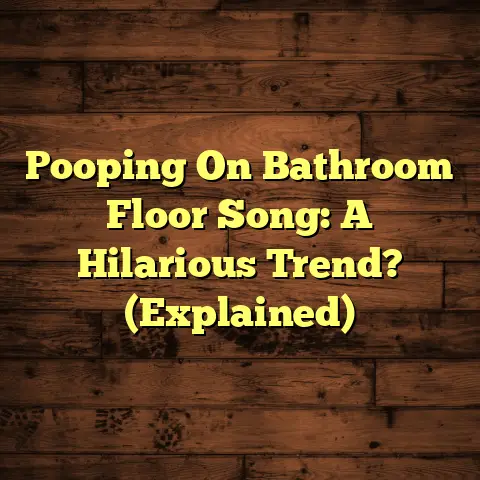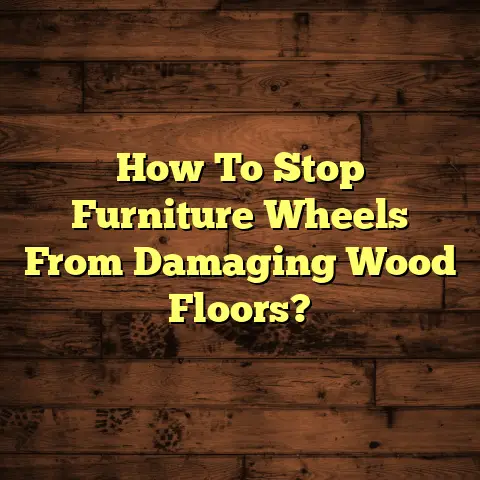Concrete Floor Alternatives? (5 Cheaper Options!)
I’m here to walk you through the evolving world of flooring.
It’s a world where innovation is constantly reshaping what’s under our feet.
For years, concrete has been the king of flooring, especially when you need something tough and budget-friendly.
But let’s be real, times are changing.
People want more than just durability.
They want style, comfort, and, most importantly, affordability.
That’s why I’m excited to dive into some fantastic alternatives to concrete that won’t break the bank.
We’re talking about options that not only look great but also stand up to the demands of modern living.
So, if you’re ready to explore some exciting possibilities, stick around!
Overview of Concrete Flooring
Let’s start by giving concrete its due.
It’s tough as nails, requires minimal maintenance, and, generally speaking, it’s relatively inexpensive.
I’ve seen it used everywhere, from high-traffic commercial spaces to basements and garages.
It’s a workhorse, no doubt about it.
But, I also have to be honest, concrete isn’t exactly eco-friendly.
The production of cement, a key ingredient, releases a significant amount of carbon dioxide.
Plus, the installation process can be energy-intensive.
This is something to keep in mind if you’re trying to make more sustainable choices in your home.
The Need for Alternatives
Why are people looking beyond concrete?
Well, the reasons are as varied as the flooring options themselves.
Cost is a big one.
While concrete itself might be affordable, the cost can quickly add up with polishing, staining, and sealing.
Aesthetics also play a huge role.
Let’s face it, concrete can feel a bit cold and industrial, which isn’t everyone’s cup of tea, especially in a cozy home setting.
I’ve noticed a definite trend towards warmer, more textured flooring options that create a more inviting atmosphere.
And let’s not forget comfort!
Standing on concrete for long periods can be tough on your joints.
Alternatives like cork or even certain types of vinyl offer a much softer feel underfoot.
Finally, there’s the installation factor.
Some people prefer a DIY-friendly option, and while you can DIY concrete, it’s definitely not for the faint of heart.
Options like laminate or vinyl plank are much easier to install yourself, saving you money on labor costs.
Alternative 1 – Vinyl Flooring
Alright, let’s get into the good stuff!
First up, we have vinyl flooring.
Now, I know what you might be thinking:
“Vinyl?
Isn’t that the stuff from my grandma’s kitchen?”
Well, think again!
Vinyl flooring has come a long way in recent years.
It’s incredibly versatile, surprisingly affordable, and available in a mind-boggling array of styles.
One of the biggest advantages of vinyl is its water resistance.
This makes it a fantastic choice for bathrooms, kitchens, or any area prone to spills.
Installation is also a breeze, especially with vinyl plank or tile options.
Many of these products feature a click-lock system, making it a very DIY-friendly project.
And the designs?
You can find vinyl that perfectly mimics the look of wood, stone, or even tile.
It’s almost scary how realistic some of these products look!
As for price, you can expect to pay anywhere from $2 to $7 per square foot for vinyl flooring, depending on the type and quality.
Here’s a quick breakdown of the different types:
- Vinyl Sheet: The most affordable option, but can be tricky to install properly.
- Vinyl Tile: Offers more design flexibility and easier installation than sheet vinyl.
- Vinyl Plank: The most popular option, mimicking the look of hardwood with easy click-lock installation.
Alternative 2 – Laminate Flooring
Next up, let’s talk about laminate flooring.
This is another budget-friendly option that’s been gaining popularity for years.
Laminate is a composite material made up of several layers, including a high-density fiberboard (HDF) core and a decorative layer that’s printed to look like wood, stone, or tile.
One of the biggest selling points of laminate is its durability.
It’s scratch-resistant, stain-resistant, and relatively easy to maintain.
This makes it a great choice for homes with kids or pets.
Like vinyl, laminate is also fairly easy to install, thanks to its click-lock system.
You can typically install laminate flooring yourself in a weekend, saving you a significant amount of money on labor costs.
The cost of laminate flooring typically ranges from $1 to $5 per square foot, making it one of the most affordable options on the market.
However, it’s important to note that laminate is not as water-resistant as vinyl.
While some laminate products are water-resistant, they’re not waterproof.
So, you’ll want to avoid using laminate in areas that are prone to moisture, such as bathrooms or laundry rooms.
Alternative 3 – Engineered Wood Flooring
Now, if you’re looking for something a little more upscale, let’s talk about engineered wood flooring.
This is a great option if you love the look of real hardwood but want something that’s more affordable and durable.
Engineered wood flooring is made up of a thin layer of hardwood veneer that’s bonded to a core of plywood or HDF.
This construction makes engineered wood more stable than solid hardwood, meaning it’s less likely to warp or expand and contract with changes in humidity.
Engineered wood also holds up better against moisture compared to solid hardwood.
This makes it a good choice for basements or other areas where moisture can be a concern.
Aesthetically, engineered wood is virtually indistinguishable from solid hardwood.
You get the same beautiful grain patterns, warmth, and character of real wood, but at a lower price point.
The cost of engineered wood flooring typically ranges from $3 to $10 per square foot, depending on the species of wood and the thickness of the veneer.
While this is more expensive than vinyl or laminate, it’s still significantly cheaper than solid hardwood, which can easily cost $8 to $20 per square foot.
Alternative 4 – Cork Flooring
Alright, let’s get a little more unique!
Have you ever considered cork flooring?
This is a fantastic eco-friendly option that’s gaining popularity for its comfort, sustainability, and unique aesthetic.
Cork flooring is made from the bark of cork oak trees, which is harvested without harming the tree.
This makes cork a rapidly renewable resource and a very sustainable flooring option.
One of the biggest benefits of cork is its comfort underfoot.
It’s naturally resilient and provides excellent cushioning, making it a great choice for kitchens, bedrooms, or any area where you spend a lot of time standing.
Cork also has excellent thermal and acoustic insulation properties.
It can help keep your home warmer in the winter and cooler in the summer, and it can also help reduce noise transmission between floors.
Aesthetically, cork flooring has a unique, natural look that can add warmth and character to any space.
It’s available in a variety of colors and patterns, from traditional speckled designs to more modern, sleek styles.
The cost of cork flooring typically ranges from $4 to $8 per square foot, making it a mid-range option in terms of price.
Installation is relatively straightforward, especially with cork tiles that feature a click-lock system.
However, it’s important to seal cork flooring properly to protect it from moisture and stains.
Alternative 5 – Bamboo Flooring
Last but not least, let’s talk about bamboo flooring.
This is another sustainable option that’s known for its strength, durability, and unique appearance.
Bamboo is a grass that grows incredibly quickly, making it a rapidly renewable resource.
In fact, some species of bamboo can grow up to three feet per day!
This makes bamboo flooring a very eco-friendly choice.
Bamboo flooring is surprisingly strong and durable.
In fact, some types of bamboo are even harder than hardwood!
This makes it a great choice for high-traffic areas.
Aesthetically, bamboo flooring has a unique, modern look that can add a touch of elegance to any space.
It’s available in a variety of colors and grain patterns, from light and airy to dark and rich.
The cost of bamboo flooring typically ranges from $3 to $8 per square foot, making it a mid-range option in terms of price.
Installation is similar to that of hardwood flooring, and it can be installed using nails, glue, or a click-lock system.
One thing to keep in mind with bamboo flooring is that it can be susceptible to moisture damage.
So, it’s important to choose a high-quality product and to seal it properly to protect it from water.
Conclusion
So, there you have it!
Five fantastic alternatives to concrete flooring that offer a range of benefits in terms of cost, aesthetics, comfort, and sustainability.
Whether you’re looking for a budget-friendly option like vinyl or laminate, a more upscale choice like engineered wood, or a sustainable alternative like cork or bamboo, there’s a flooring option out there that’s perfect for your needs and budget.
I encourage you to weigh your options carefully and consider your specific needs and preferences.
Don’t be afraid to explore these alternatives further and see what they can offer.
Innovation in flooring is constantly evolving, so keep an open mind and you might just find the perfect solution for your next flooring project!





